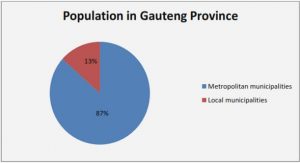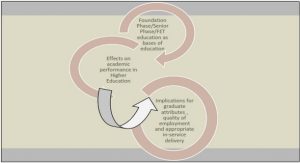Get Complete Project Material File(s) Now! »
THE NARRATOR AND POINT OF VIEW IN NUMBERS 16 AND 17
Though the nature of ‘point of view’ and the essence of the narrator remain controvertible subjects in narratology, their pervading presence within the story world and their significance for guiding the reader should not be underestimated. The narrator naturally infuses his/her point of view into the story ranging from overt to covert and also supplies the perspective of characters, mostly through their dialogue and sometimes through their actions. For the reader, contending points of view elicit tension and drama, but in a dissimilar fashion from the plot of the story. Rather than only observing the events and surface elements of the text, attention to point of view features contributes to the escalation of suspense created by its manner of narration. In most cases, point of view analysis provides contributing factors to establishing features of plot and is associated with elements in the literary analysis of characterization. This chapter will discuss the contributions of scholars to the issue of “point of view” (broadly construed); how biblical narratologists appropriated this in their research, and then proceed to apply this refined theory to Numbers 16 and 17. Ultimately, this chapter will provide interpretive insights through a consideration of ‘point of view’ and will clarify issues for the chapters that follow.
Part of what marks the Old Testament as possessing literariness is the quality of its narration, the evidence of discourse and levels of narration (Rimmon-Kenan 2002:116-117). Rather than being a flat or unified narration, the discourse of biblical narratives often includes multilevel, sometimes a polyphonic phenomenon that provides texture to a story. ‘This ability to shift the camera eye gives a sense of multi-dimensional depth—the antithesis of flatness. It also provides the author with a variety of ways in which to convey his narrative’ (Berlin 1983:45). So too, Hebrew narratives possess their own brand of narration and variations in perspective.
Point of view in modern literary theory
Several influential scholars such as: Lubbock (1921), Brooks and Warren (1943), Friedman (1967), Booth (1983) and Stanzel (1984) elucidated the concept of point of view, making it a major rubric for narrative investigation (Tolmie 1999:29). Since the time of these earlier theorists, the most widely adopted proposal for point of view examination is found in the work of Boris Uspensky (1973). He offers a categorical yet nuanced way of considering point of view, an approach well suited for application to biblical narratives (cf. Berlin 1994:55-56; Resseguie 2005:169; Yamasaki 2006:91).
Uspensky finds that point of view is manifested in four ‘spheres’ or ‘planes’: ideological, phraseological, spatial and temporal, and psychological (Uspensky 1973:5). First, the ideological (or evaluative) point of view underscores broad conceptions of the world and its systems (Weltanschauung). The ideological evaluation is least interesting, according to Uspensky (1973:8), when the work presents a single point of view which dominates the text. The biblical narrative is often thought to be monologic because of the assertive presence of the narrator and the dominating theological point of view that subordinates other ideological viewpoints that may emerge. However, this is not always the case, and the detection of varying points of view makes a prolific contribution to an analysis of biblical narratives that especially enriches the interpretation of conflict driven narratives.
1 INTRODUCTION
1.1 A history of pentateuchal interpretation
1.1.1 Pre-modern Old Testament interpretation
1.1.2 The modern era
1.1.2.1 Source criticism
1.1.2.2 Form criticism
1.1.2.3 Redaction criticism
1.1.2.4 Traditio-historical criticism
1.2 New literary criticism
1.3 A history of the research specific to Numbers 16 and 17
1.4 Specific research problems in Numbers 16 and 17
1.5 The text and translation of Numbers 16 and 17
1.6 The composition and redaction of Numbers
1.7 Methods of research and presuppositions
2 THE HISTORICITY OF THE BOOK OF NUMBERS
2.1 Archaeology and the wilderness sojourn
2.2 The archaeological task
2.3 An historical and archaeological evaluation of the wilderness sojourn
2.3.1 Israel in Egypt
2.3.2 Israel’s invasion of Canaan
2.3.3 Israel’s sojourn in the wilderness
2.4.1 Historiography and archaeology
2.4.2 Historiography and biblical history
2.4.3 Historiography and narrative criticism
2.5 Conclusion
3 THE LITERARY SETTING FOR NUMBERS 16 AND 17
3.1 The outline and literary structure of the book of Numbers
3.1.1 The geographical outline
3.1.2 The generational outline
3.1.3 The alternation outline
3.1.4 The cyclical outline
3.1.5 A synthesis of views on the structure of Numbers
3.2 An appraisal of source-critical application to Numbers 16 and 17
3.2.1 The D source in Numbers
3.2.3 The J and E sources in Numbers
3.2.3 The P source in Numbers
3.3 The composite nature of Numbers 16 and 17
3.4 Conclusion
4 THE NARRATOR AND POINT OF VIEW IN NUMBERS 16 AND 17
4.1 Introduction
4.2 Point of view in modern literary theory
4.3 Appropriation of point of view theory by biblical narrative critics
4.4 The biblical narrator
4.5 Methodology
4.6 A point of view analysis of Numbers 16 and 17
5 CHARACTERIZATION IN NUMBER 16 AND 17
5.1 Character theory in literary conception
5.2 Issues and obstacles to literary characterization
5.3 Adaptation of literary theory by Old Testament scholarship
5.4 A paradigm for evaluating Old Testament characters
5.5 Evaluating the characters in Numbers 16 and 17
5.5.1 God in the book of Numbers
5.5.2 Moses in Numbers 16 and 17
5.5.3 Korah in Numbers 16 and 17
5.5.4 Aaron in Numbers 16 and 17
5.5.5 Dathan and Abiram
5.5.6 Korah’s followers — the 250 men
5.5.7 The people
5.6 Conclusion
6 THE IMPLIED READER’S SENSITIVITIES AND THE PLOT OF NUMBERS 16 AND 17
6.1 The implied reader
6.2 Reader response versus reader sensitivity
6.3 The nature of plot
6.4 Introduction to the plot of Numbers 16 and 17
6.4 The first quinary plot scheme (Numbers 16:1-40)
6.4.1 Exposition (16:1-2)
6.4.2 Complication (16:3-30)
6.4.3 The transforming action (16:31-35)
6.4.4 The denouement (16:36-38)
6.4.5 The final situation (16:39-40)
6.5 Second quinary plot scheme (Numbers 16:41-50)
6.5.1 The exposition (16:41)
6.5.2 The complication (16:42-46)
6.5.3 The transforming action (16:47)
6.5.4 The denouement (16:48)
6.5.5 The final situation (16:49-50)
6.6 Third quinary plot scheme (Numbers 17:1-13)
6.6.1 The exposition (17:1-5)
6.6.2 The complication (17:6-7)
6.6.3 The transforming action (17:8-9)
6.6.4 The denouement (17:10-11)
6.6.5 The final situation (17:12-13)
6.7 Conclusion
7 CONCLUSION
DOCTOR OF THEOLOGY






